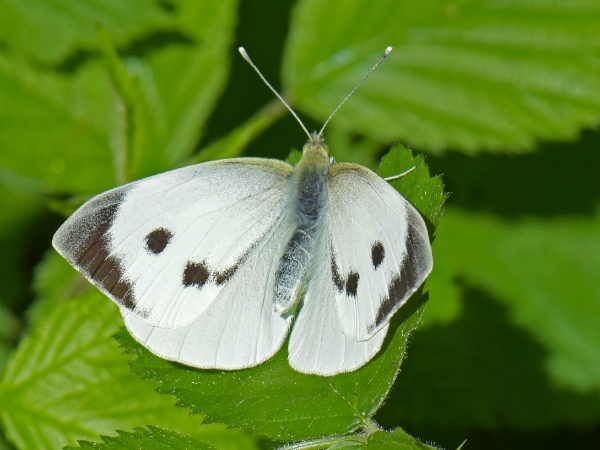
| Butterfly Conservation |
 |
| Hertfordshire & Middlesex Branch |
 |
|
|||
| Saving butterflies, moths and our environment | ||||
%20090516_DM_43.jpg)

Large WhitePieris brassicaeWidespread and common resident Distribution and Status This species can be seen almost anywhere in the two counties. It is still very common and a number of immigrants from mainland Europe supplement breeding populations here. Generally, abundance has slightly increased since the 1980s but numbers vary greatly year by year. Apart from immigration as noted above, other factors like larval predation and parasitism have a huge effect on populations Habitat Requirements Almost every habitat type like gardens, allotments, and farmland Larval Foodplants Cabbages Brassica spp. including Brussels Sprout, Kale, Broccoli, Oil-seed Rape, Nasturtium and Wild Mignonette Adult Food Sources Buddleia Buddleja davidii, Lavender Lavandula x intermedia, Red Valerian Centranthus ruber, Runner Bean Phaseolus coccineus, Honesty Lunaria annua Behaviour/Observation notes The Large White is very active so it can be difficult to take close-up pictures of one. In addition, the wings are often closed when feeding on flowers so the best opportunity for taking photographs is very early in the morning when they are often lethargic and their wings are more likely to open. Usually, the butterfly's size distinguishes it from the other 'whites' but very occasionally, the Large White is on the small side and could be confused with a Small White. The larger and darker tips of the forewings identifies it as a Large White Life History The Large White overwinters as a pupa so if there is warm weather in March facilitating speedier development then emergence of the adults should start in early April. The second brood is usually much larger with a peak in late July. The second generation is augmented by migrants from the Continent. Any individuals seen in October may be of the third generation especially if warm weather prevails in late summer and September. Large batches of eggs are laid mainly beneath the leaves of Brassica plants. The gregarious larvae can be attacked by the parasitic larvae of the wasp Apanteles glomeratus which provides some control over the populations of the butterfly. Pupae are usually found on walls and tree trunks Further information
UK distribution map |
Copyright Butterfly Conservation © 2019 Hertfordshire & Middlesex Branch
Privacy and Copyright Statement and Cookie Policy Statement
Butterfly Conservation
Company limited by guarantee, registered in England (2206468)
Registered Office: Manor Yard, East Lulworth, Wareham, Dorset, BH20 5QP. Tel: 01929 400 209
Charity registered in England & Wales (254937) and in Scotland (SCO39268). VAT No. GB 991 2771 89